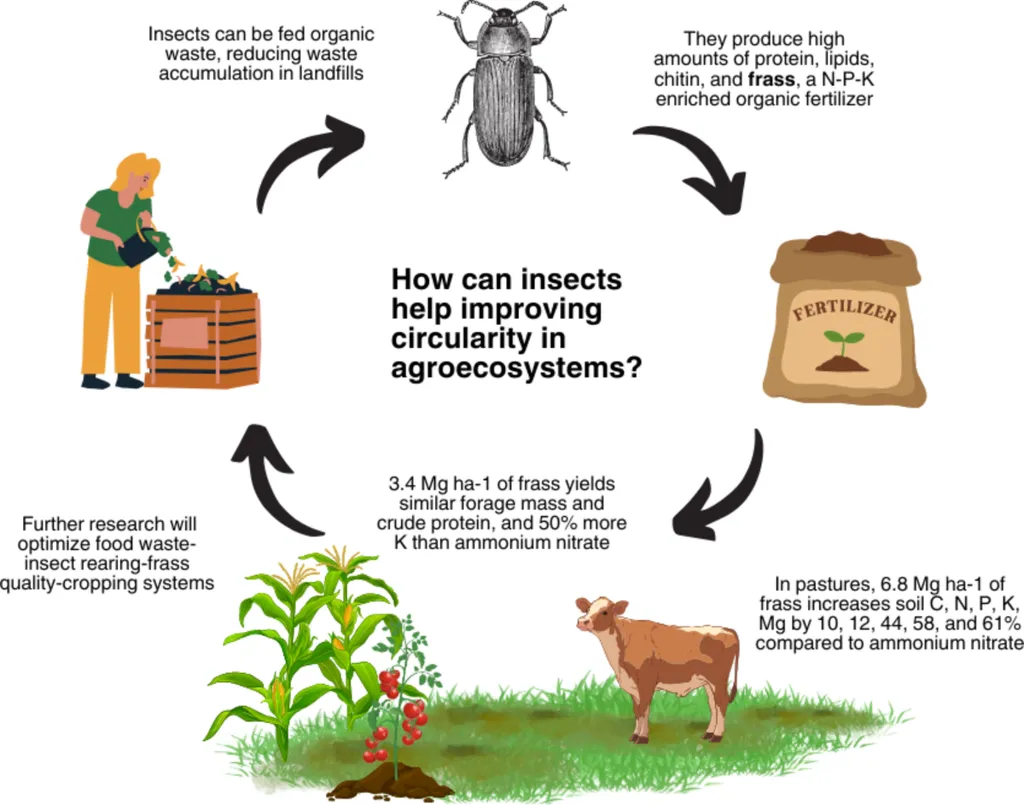In the heart of bustling cities, where space is a premium and soil fertility is often compromised, a novel approach to urban farming is taking root. Researchers have found that integrating insect frass—a nutrient-rich byproduct of insect farming—into vertical farming systems can significantly boost crop yields, suppress pests, and enhance economic returns. This promising development, published in *Scientific Reports*, could reshape urban agriculture and contribute to food security in the face of climate change and population growth.
The study, led by Andrew Agrey Abiya of the International Centre of Insect Physiology and Ecology (icipe), focused on Chinese cabbage intercropped with Desmodium in multi-storey gardens. The researchers tested various treatments, including NPK fertilizer, liquid and powdered frass fertilizer, Desmodium intercrop, and combinations thereof. The results were striking: liquid frass fertilizer produced a 1.6-fold higher yield compared to the control and a 1.4-fold increase over NPK fertilizer. “The integration of frass fertilizer into multi-storey gardening not only enhances yield but also contributes to sustainable and safe food production,” Abiya noted.
The benefits extended beyond yield. Plots treated with powdered frass fertilizer and Desmodium showed significantly reduced pest incidences and damage scores. Moreover, the nutritional content of the vegetables improved, with crude protein and ash content rising to 15–20% compared to 8–13% in control and NPK-treated plots. This nutritional boost is a game-changer for urban farmers looking to produce high-quality, nutrient-dense crops in limited spaces.
Economically, the advantages were equally compelling. Vegetables from plots treated with liquid frass fertilizer translated into a higher net profit margin, with a 75.14% return on investment. This finding underscores the potential for frass fertilizer to revolutionize urban agriculture by making it more profitable and sustainable.
The study’s implications are far-reaching. As urban populations grow and traditional farming faces challenges from climate change, vertical farming systems that incorporate frass fertilizer could become a cornerstone of food security. “This research opens new avenues for enhancing sustainable food production in urban areas,” Abiya said. “It’s a step towards addressing the growing challenges of food insecurity and climate change.”
The integration of frass fertilizer into vertical farming systems could also drive innovation in the agriculture sector. Farmers and agritech companies might explore new ways to produce and distribute frass fertilizer, creating a circular economy where waste from insect farming becomes a valuable resource for crop production. This could lead to the development of new agricultural technologies and practices that are both environmentally friendly and economically viable.
In conclusion, the study highlights the transformative potential of frass fertilizer in urban agriculture. By enhancing yield, suppressing pests, and improving nutritional content, frass fertilizer offers a sustainable and profitable solution for urban farmers. As the world grapples with the challenges of climate change and food security, this research provides a beacon of hope and a roadmap for the future of agriculture.

